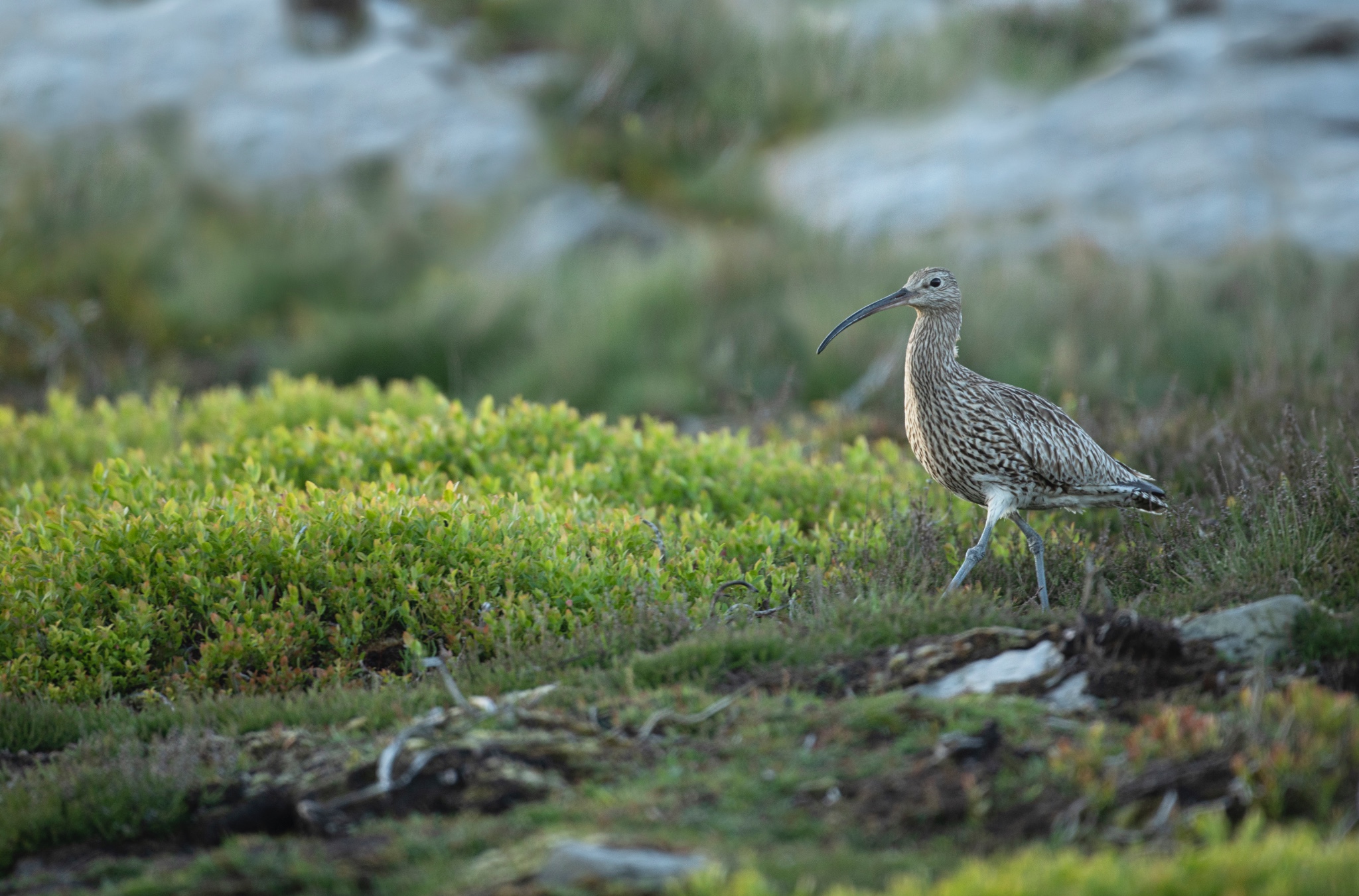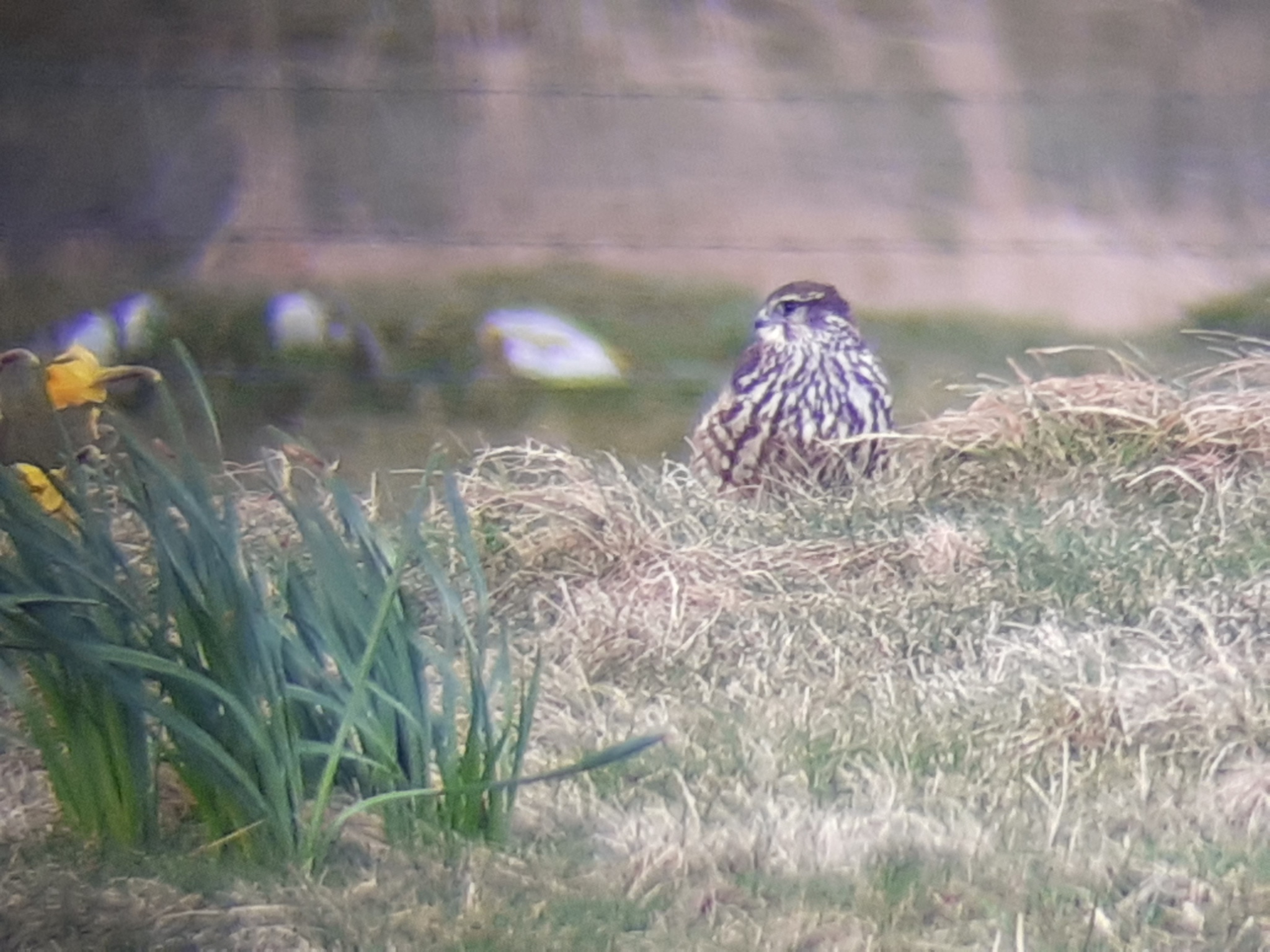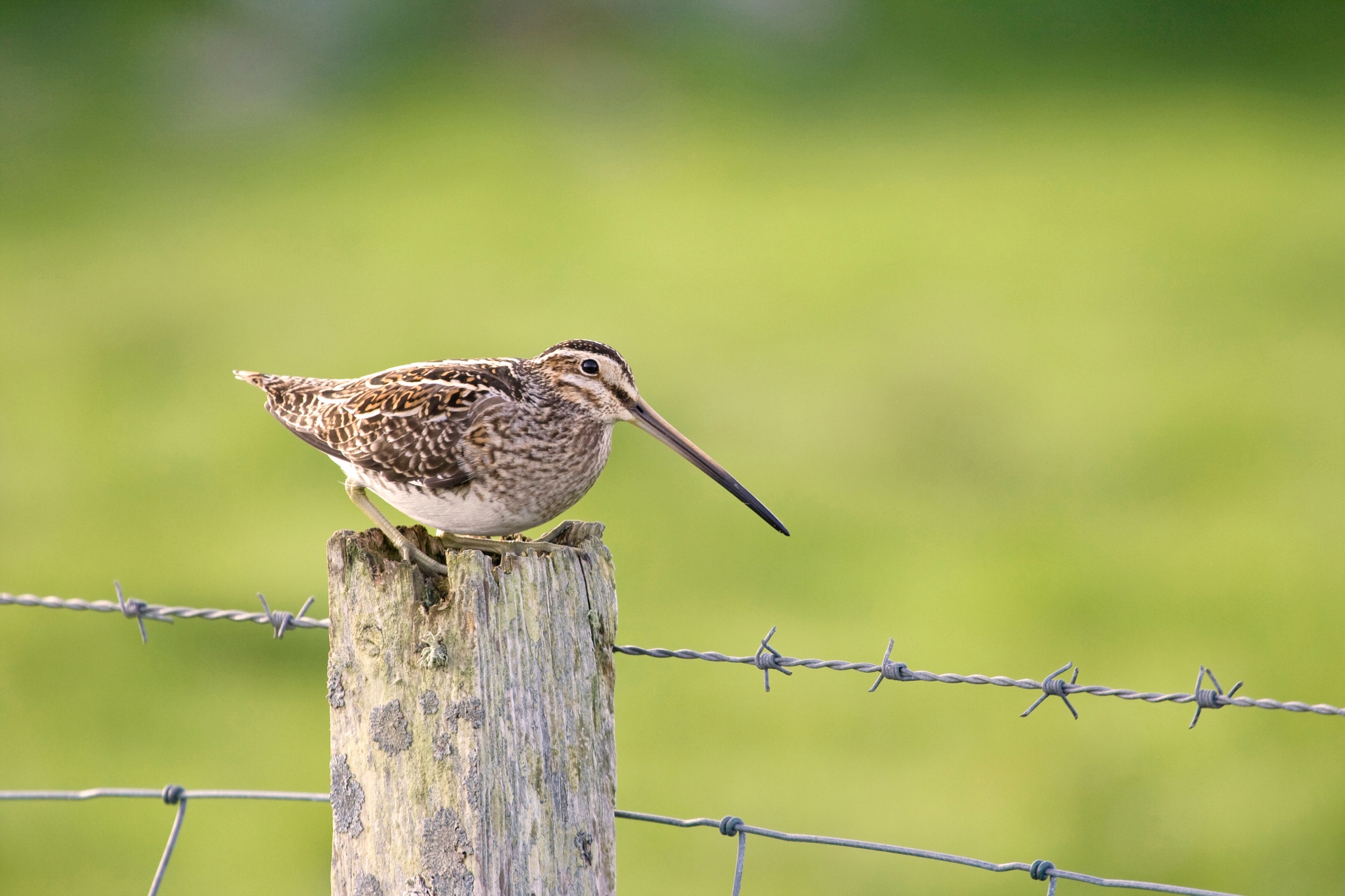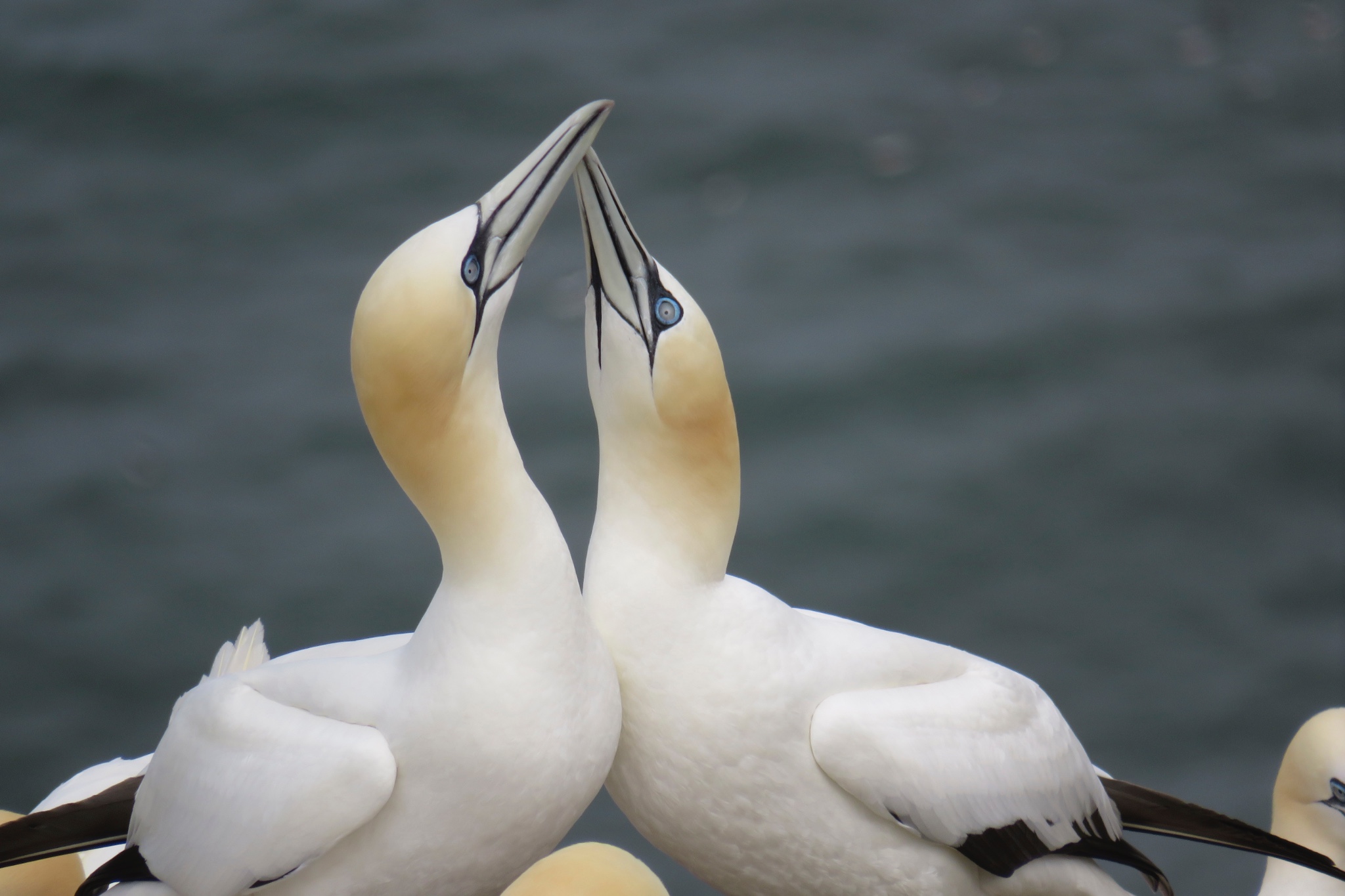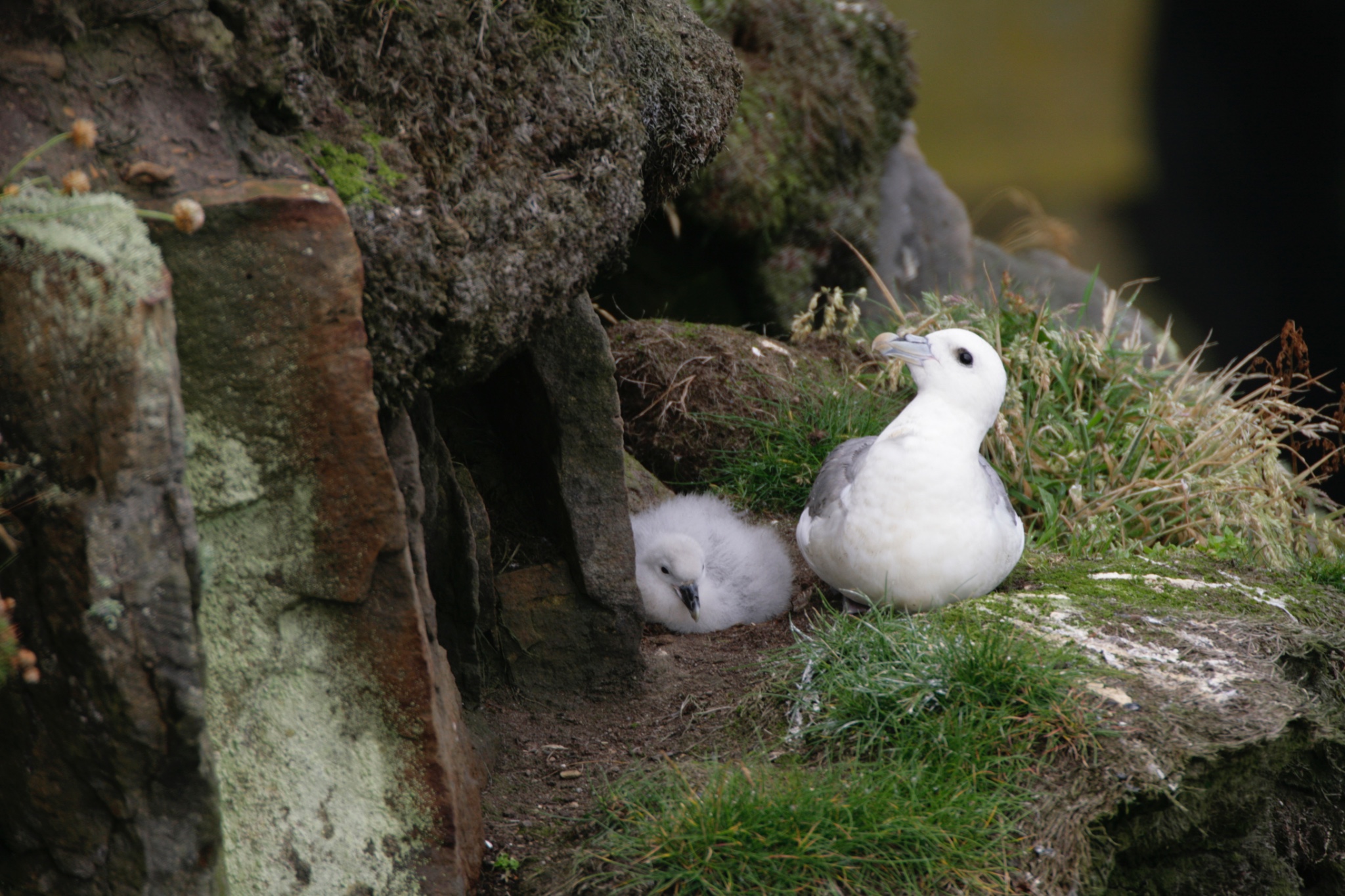5. Curlew (Whaup)
“These are on my top 5 list again for 2025. Their trilling call and parachuting flight display is one of the sure signs that spring is on the way. Only males do this display and can also be told apart from females by their noticeably shorter bill. Curlew populations in Orkney have increased slightly in recent years, when compared to steady declines further south; showing just how important Orkney is for this species."
4. Merlin (Smyril)
“These are our smallest bird of prey. They’re relatives of the peregrine, and males are only slightly larger than blackbirds! However, being falcons, they certainly pack a punch for their size. They mainly hunt small birds such as meadow pipits and skylarks, starlings and small waders, as well as insects such as moths. During the spring/summer months these birds can be found in the moorland hills of Mainland, Hoy, Rousay and Eday where they nest, albeit in very small numbers. They are a Red listed species in the UK, so we are very lucky to have them here.”
3. Snipe (Heathery bleater)
“One of our more cryptic wading birds, with mottled brown and straw-yellow plumage that allows them to easily blend in with their environment. They’re another species with distinctive flight displays - males ‘chip’ and ‘drum’ to mark their territory and attract females. Their iconic ‘drumming’ sound isn’t made by the birds calling, it’s actually the sound of their tail feathers rubbing together! I always think they sound like spaceships, Orkneys very own UFOs!”
2. Gannet (Solan goose)
“They’re our largest seabird, with a wingspan close to 2 meters. They have distinctive white plumage with a yellow head, and black wingtips. Young gannets are almost completely dark with ‘star-like’ white spotting. They gradually get paler as they age and develop ‘piano keys’ on their wings. They’re excellent fishers and can reach speeds over 60mph when they dive into the water! Despite being hit by bird flu recently, gannets are still in good numbers at their breeding colonies at Marwick Head on Mainland and Noup Head on Westray.”
1. Fulmar (Mallimack)
“These are some of our most commonly seen seabirds, as they hang around our coastline throughout the year, and will breed in any suitable nook they can find. They have very ‘gull-like’ colouring with grey wings and white bodies and heads. They are close relatives of some of the largest flying birds in the world, the albatrosses! Like their giant cousins, they are masters of the wind and sea and can often be seen taking advantage of our windy weather, dancing along the cliff edges on the squalls.”
To keep up to date with the Orkney Native Wildlife Project until next month’s column in the Orcadian, follow us on Facebook, and check out our website.


